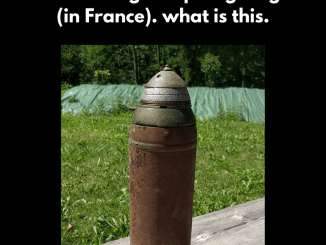Here’s a fun challenge that might look simple at first glance — but don’t be fooled. This brain teaser is designed to test your attention to detail and logical thinking. In the image above, you see three seemingly identical cartoon cats, each labeled with a number: 1, 2, and 3.
But look closer. One of them is different.
So the big question is: Can you find the odd cat out?

If you think you’re observant and intelligent (or “inteligent,” as the image cheekily says), prove it. Study the image carefully and try to figure out which cat isn’t quite like the others. Then scroll down to see if your answer matches the correct one!
Why This Puzzle Is Trickier Than It Seems
At first glance, all three cats look pretty much the same. They’re yellow, wearing red collars, and have nearly identical expressions. So what makes one of them different?
The reason many people get this puzzle wrong isn’t because it’s too hard — it’s because they’re looking for big, obvious differences. In reality, the key lies in the tiny details. These small visual differences are easy to overlook, especially if you’re not deliberately scanning every feature of each cat.
Common Mistakes People Make While Solving This Puzzle
Let’s be honest — most people will look at the faces first. They’ll compare the eyes, the whiskers, the ears, or the mouth. And when they can’t find anything different in the facial features, they often jump to conclusions based on color or posture. That’s where many go wrong.
Video :Which Cat Stands Out? Crack the Brain Teaser Riddle!
Some common traps include:
- Thinking the facial expression is slightly off (it’s not).
- Getting distracted by the tail positions (they all curl the same).
- Believing the color tone is different (it’s a trick of the eye).
- Ignoring the paws, legs, or collar details.
This kind of puzzle plays with your natural tendency to focus on the center or the most animated parts of an image, like the face — while the real clue hides elsewhere.
Step-by-Step Breakdown to Solve the Puzzle
Now let’s go through how you can approach this puzzle logically and find the correct answer: Cat number 3.
Step 1: Start from the top
Check each cat’s ears, eyes, whiskers, and facial structure. Are the shapes and placements consistent across all three cats? Yes. No obvious differences here.
Step 2: Observe the collar
This is where it gets interesting. All three cats wear a red collar with a silver/white tag. But did you notice the tag itself?
- Cat 1: The tag is a complete circle with a black outline.
- Cat 2: Same as Cat 1 — circular tag, black outline.
- Cat 3: Look closer… the tag is missing the black outline. That’s right — it’s just a red circle with no detail or rim.
This subtle but intentional inconsistency is what sets Cat 3 apart. That’s the odd one!

Step 3: Double-check the rest
To avoid false conclusions, compare all other elements — body posture, tail curl, paw positions, shading. They’re all identical. This confirms the only true difference lies in that tiny collar tag outline.
Why Small Details Matter in Brain Teasers
This puzzle teaches a valuable lesson: logic and focus go hand-in-hand. Our brains love to jump to conclusions based on patterns or big-picture thinking. But when we take the time to look deeper, we often find the truth is in the details.
Solving puzzles like this isn’t just for fun — it sharpens your observation skills, boosts cognitive awareness, and encourages your brain to slow down and analyze things more carefully. In a world where we often skim and scroll, that’s a powerful mental exercise.
Video : Find the ODD One Out – Sea Edition! 🐬🐚🦑 Easy, Medium, Hard – 30 levels
How Well Did You Do? Share Your Answer Below!
So, what was your guess? Did you spot Cat #3 as the odd one? Or did you fall into one of the common traps? Let us know in the comments! And don’t be shy — tag a friend and see if they can do better. Sometimes it’s more fun to figure it out together (or laugh at your wrong guesses afterward).
Final Thought: Keep Training Your Brain with Puzzles Like This
If you enjoyed this challenge, great news — there are plenty more where this came from! Visual riddles like this one are a fun and effective way to develop your logic, memory, and pattern recognition.
Keep challenging yourself with daily puzzles. They’re not only entertaining — they’re mental workouts disguised as games.


